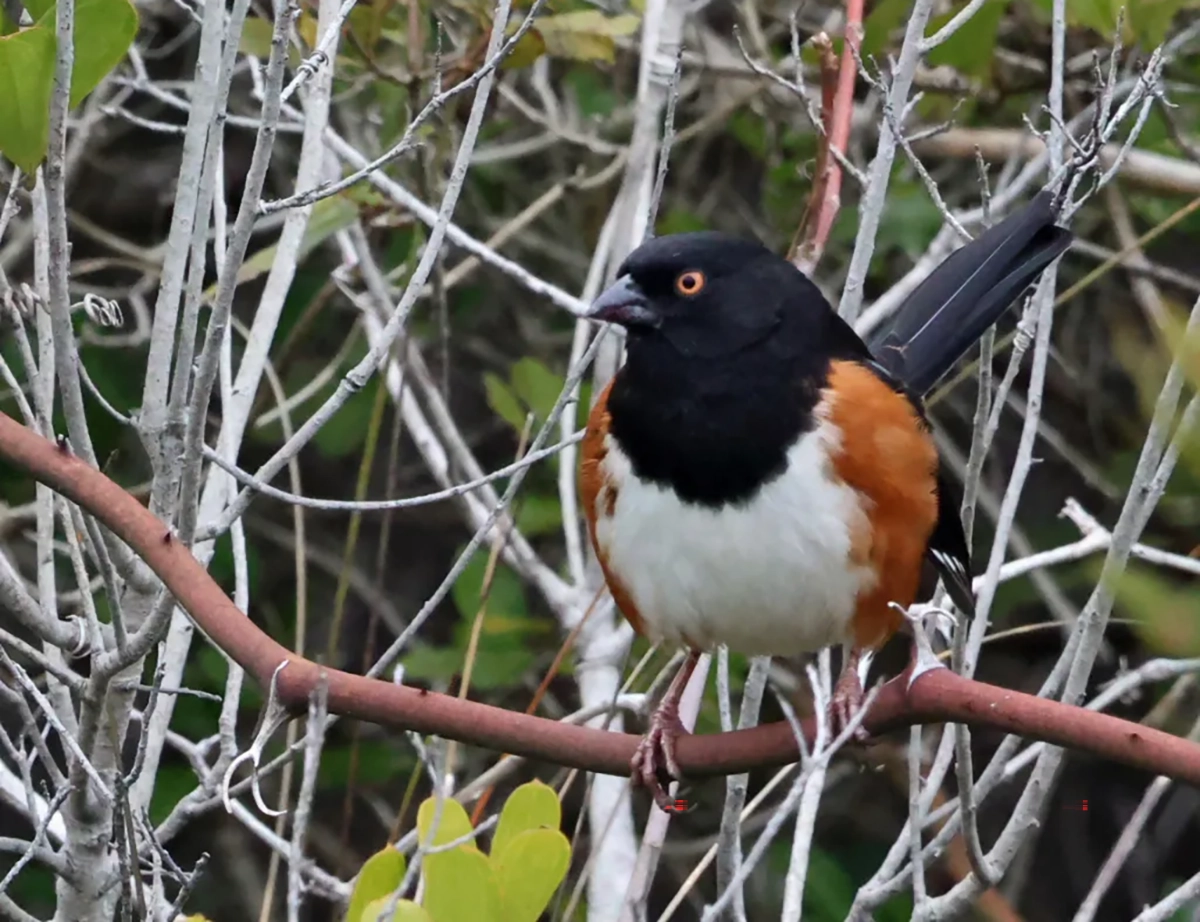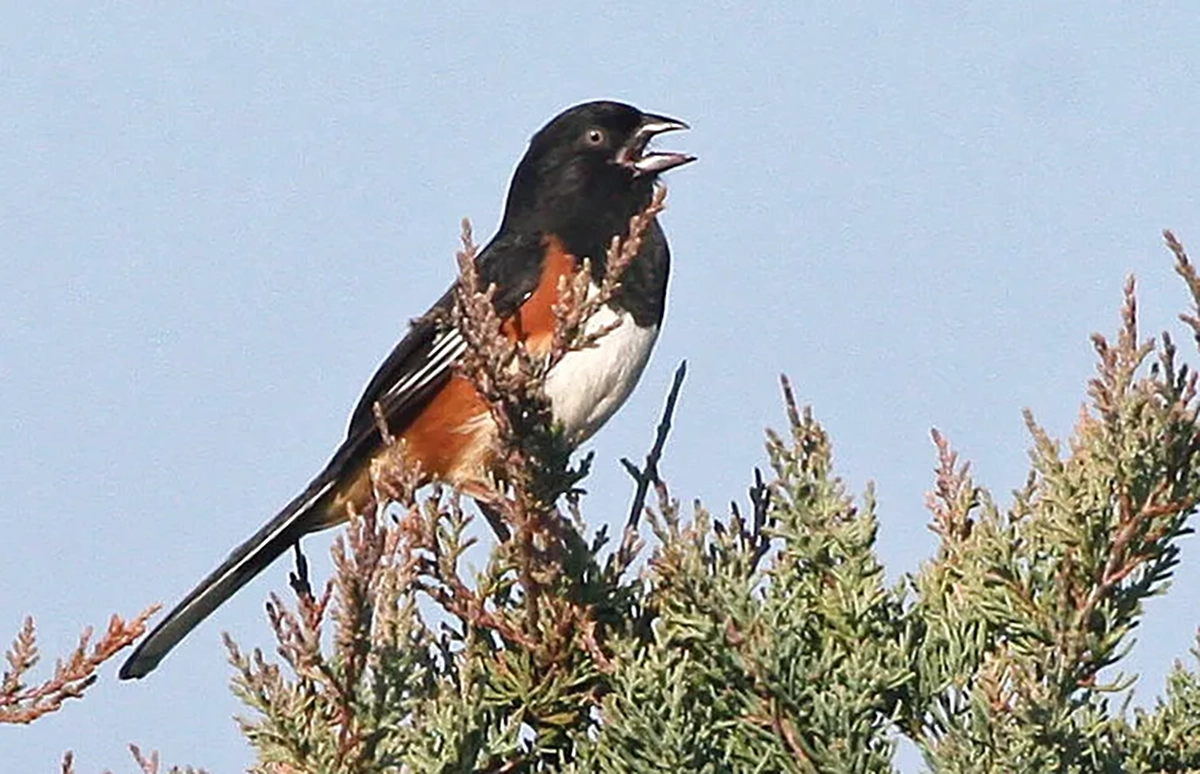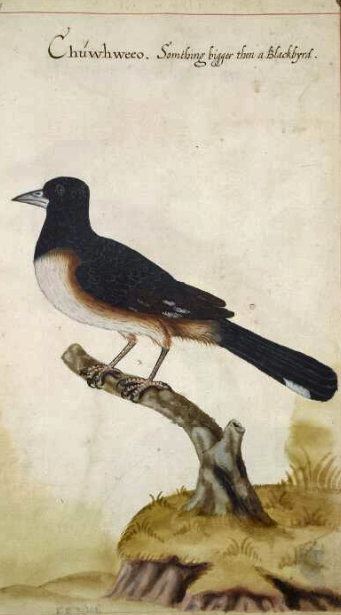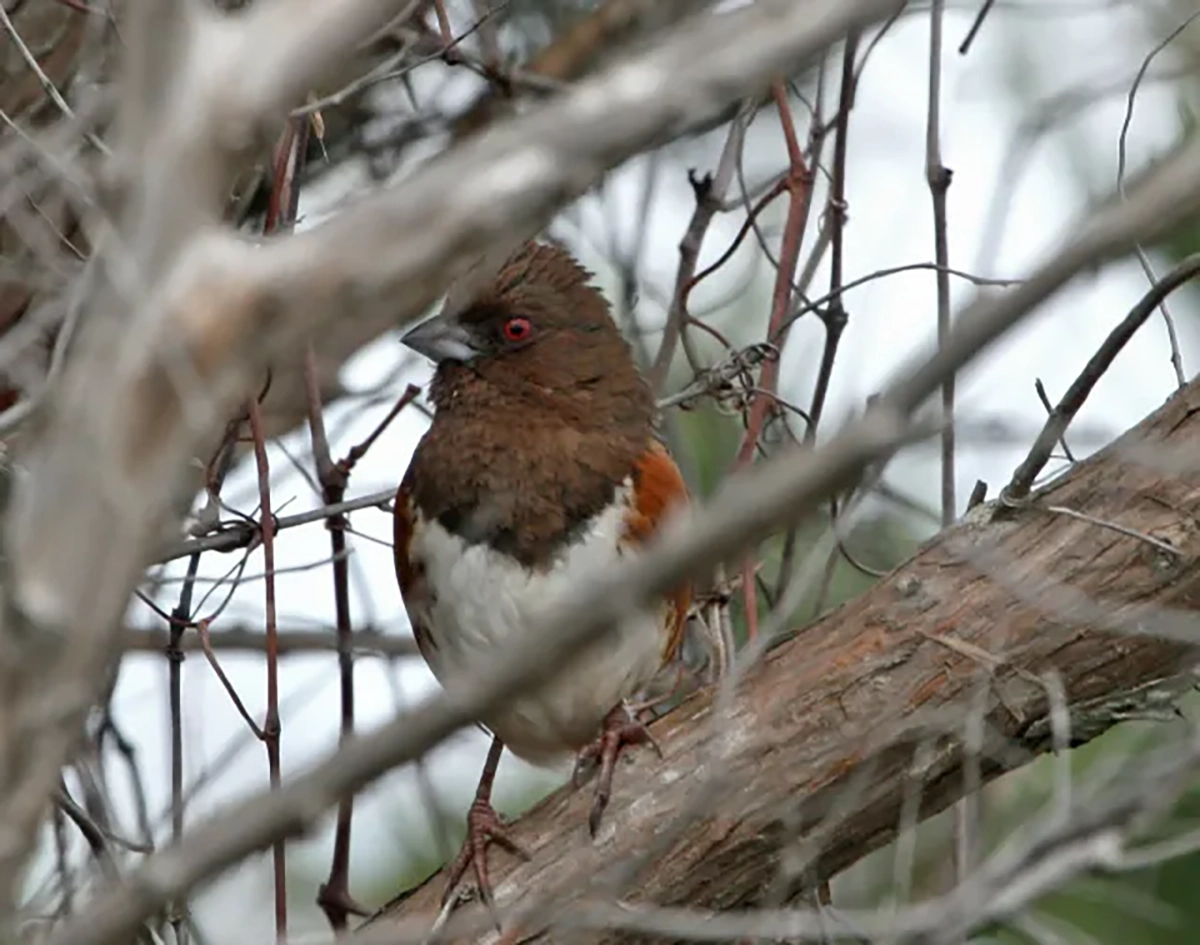
Reprinted from the Ocracoke Observer.
The eastern towhee, a strikingly handsome bird that — good looks notwithstanding — is perhaps more noted for its many vocalizations.
Supporter Spotlight
Towhee is an onomatopoeic description of one of its most common calls, coined in 1731 by the naturalist and bird artist, Mark Catesby.
But well before that, the eastern towhee played a minor role in North Carolina’s early history. John White was the governor in 1587 of the small colony on Roanoke Island that later became known as the Lost Colony and was the grandfather of Virginia Dare, the first English child born in North America.
White was also a cartographer and an accomplished artist. During his time on Roanoke, he drew many sketches of the flora and fauna, including both sexes of the towhee, which are the first depicted renderings of the species.
When one thinks of a sparrow, many envision drab-colored birds with subtle streaking, spots and eye lines that can make species identification sometimes challenging. Many will be surprised to learn that a towhee is also a member of the sparrow family.
The male has a black head, neck and shoulders, a white chest and rust-red wings and sides.
Supporter Spotlight
The female has the same color pattern as the male but is dark brown where the male is black colored. Both have long tails, a noted trait for all six towhee species in North America.

Throughout most of its distribution range, the eye color of these birds is bright red, but if you find yourself birding in Florida or the southeastern coastal regions beginning on the Outer Banks, you may see towhees whose eye color is white or straw colored.
The yellowish straw color eyes may be the result of interbreeding between the white-eye and red-eye individuals. The towhees on Ocracoke have mostly red- and straw-colored eyes. Pure white eye color individuals are rare.
Eastern towhees nest throughout the eastern United States and southeast Canada. Northern populations are migratory. Southern populations, including Ocracoke, are year-round residents.
Although normally hidden in thickets and on the ground throughout Ocracoke Island, in the spring and early summer, they will perch on top of a shrub or small tree and sing loudly.
Females build nests and incubate eggs and both sexes provide parental care and will drive off would-be predators approaching the nest.

It is not only their vocalizations that indicate they are nearby. The eastern towhee uses a distinctive foot-scratching behavior to displace loose leaves on the ground and uncover arthropod prey. This foraging behavior occurs more in winter when much of its food comes from the ground.
Omnivores, their diet varies with the season, and they consume seeds, fruits and a wide variety of invertebrates, beetles, moths, caterpillars, grasshoppers and crickets.
During spring migration you may be pleasantly surprised to see one resting in your backyard from a long night’s journey into day. Unfortunately, that is when they are most vulnerable to predators. The hazards of migration are many. Because they are ground birds, they are susceptible to predators, including pets.
Their biggest threat occurs during migration, which is only nocturnal. After a long night’s journey into day and exhausted, they rest on the ground making them susceptible to predators, especially cats.
When to see: Year-round. More easily seen in spring when they will sing at the top of bushes and small trees
Where: Throughout the island where there are thickets. Springer’s Point is a good location
If you thumb through a bird field guide published before 1995 that includes eastern North America, you will not find an eastern towhee. You will, however, see a bird with a striking resemblance that is a rufous-sided towhee. It is one and the same.
The official arbiter of bird nomenclature, The American Ornithologists’ Union, determined that this bird and its counterpart in the west, the spotted towhee (Pipilo erythrophthalmus) and formerly lumped together as subspecies, were split and each received full species status.
So why are they famous for their sounds? In addition to the sound of its name, it makes a call described as “cherwink.” But it is the song that I find so impressive, which sounds almost exactly as “Drink your teeeeeee.”
Make mine yaupon.

This story is provided courtesy of the Ocracoke Observer, a newspaper covering Ocracoke island. Coastal Review is partnering with the Ocracoke Observer to provide readers with more environmental and lifestyle stories of interest along our coast.







